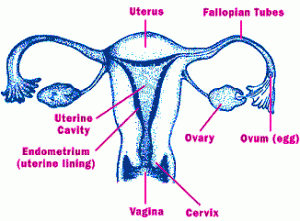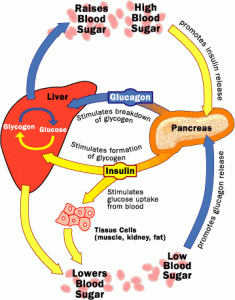Women`s Menstrual Cycle Measurements
Participant Characteristics
Participants completed a menstrual cycle history, asthma history (abridged European Community Respiratory Health Survey), and asthma control questionnaire (ACQ) at baseline. AHR was measured as the provocative concentration of methacholine causing a 20% fall in FEV1 (PC20). Skin-prick tests (SPTs) were completed for 12 aeroallergens plus saline solution and histamine controls (Omega Hollister-Stier Laboratories; Mississauga, ON, Canada). The three allergens producing the largest wheal sizes in each individual participant were used for all subsequent SPTs in that participant.
Menstrual Cycle Measurements
After the baseline visit, participants were seen daily from the start of a menstrual cycle (day 1 of menstruation) to the fourth day of menstruation of the next cycle. The data collection methods were identical for the OC and non-OC groups. On each day, a modified ACQ was recorded, salivary samples (passive drool technique) were obtained for the measurement of sex hormone levels, eNO levels were measured (NIOX Mino; Aerocrine Inc; New York, NY), and spirometry (Koko Legend; Ferraris Respiratory; Louisville, CO) was performed to American Thoracic Society standards. Histamine, saline solution, and the three individually selected allergens were assessed with SPT on alternate days (Table E1 in the online supplement).
Levels of 17p-estradiol and progesterone in saliva were measured in duplicate or triplicate by enzyme-linked immunosorbent assay (Salimetrics LLC; State College, PA). Skin allergen responses, measured at 15-min intervals, were outlined in pen and tape-transferred to paper. A blinded investigator measured wheal and flare, recording the maximum diameter and its midpoint perpendicular, and corrected for any response to the negative control. The mean of the two diameters was used in this analysis. (See the online supplement for choice of measurement tools.)
Statistical Analysis
Linear regression (Prais-Winsten regression for the repeated measures data and ordinary least squares regression for nonrepeated data) and x2 analyses were used to examine differences between participants using and not using OC.
Abbreviations: ACQ = asthma control questionnaire; AHR = airway hyperresponsiveness; eNO = exhaled nitric oxide; ICS = inhaled corticosteroid; iNOS = inducible nitric oxide synthase; OC = oral contraception; PC20 = provocative concentration of methacholine causing a 20% fall in FEV1; ppb = parts per billion; SPT = skin-prick test
New data elucidate the mechanisms by which estrogen and progesterone influence asthma in women. Among 792 women in the United Kingdom, ED visits for the treatment of acute asthma were more common during the preovulatory (follicular) and perimenstrual phases of the menstrual cycle. In one study, airway hyperresponsiveness (AHR) to adenosine monophosphate increased in the luteal phase, during which both estrogen and progesterone levels increase, compared with the follicular phase (low estrogen and progesterone), but the individual contributions of estrogen and progesterone were not addressed, and the clinical relevance was not apparent. (See the online supplement for an expanded description of the menstrual cycle.) In another study that reported increased allergen wheal size during the late follicular phase of the menstrual cycle, hormone levels were not measured. Viagra Australia by ViagraAustraliaAu.Com. 
Studies have demonstrated a role for both exogenous estrogen and progesterone in the management of perimenstrual asthma. In a prospective study of 192 postpubertal women with asthma, the 106 women using oral contraception (OC) had reduced asthma symptoms compared with those not using OC. Women given exogenous sex hormones (estrogen, progesterone, and estrogen with progesterone) noted reduced symptoms, improved pulmonary function, and improved asthma control. It is unclear from these studies whether exogenous estrogen or progesterone influences atopy, airway inflammation, or both.
Experimental work supports the effects of both estrogen and progesterone in asthma patients. Estrogen, at physiologic concentrations, prevents cholinergic-induced tracheal ring constriction by activating the nitric oxide-cyclic guanosine monophosphate-protein kinase pathway. Estrogen receptor-a knockout mice exhibit increased AHR to methacholine after allergen sensitization and challenge.


